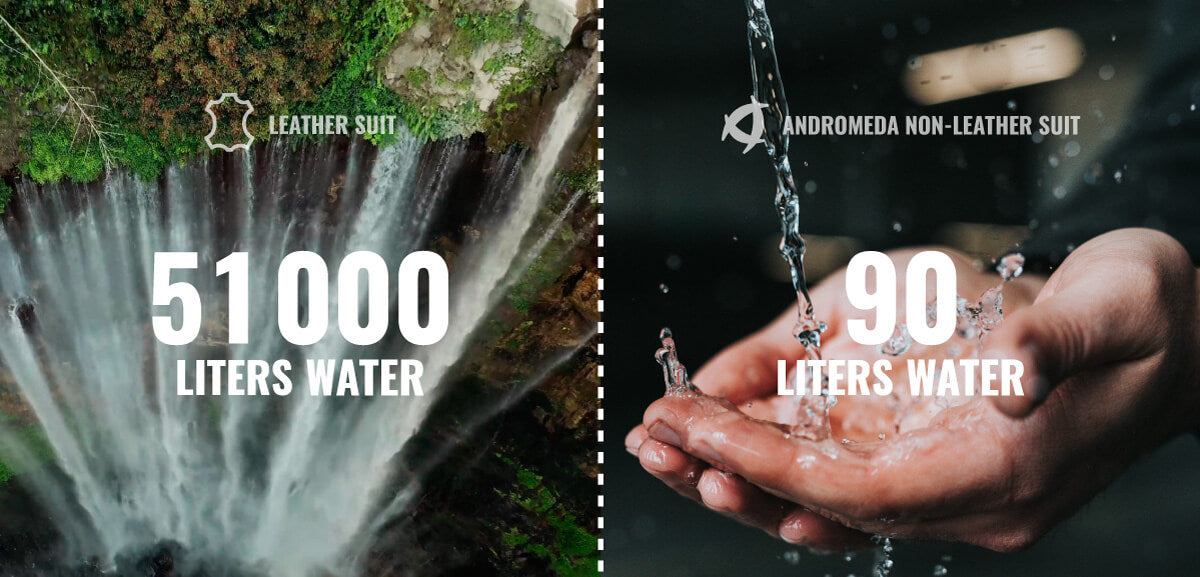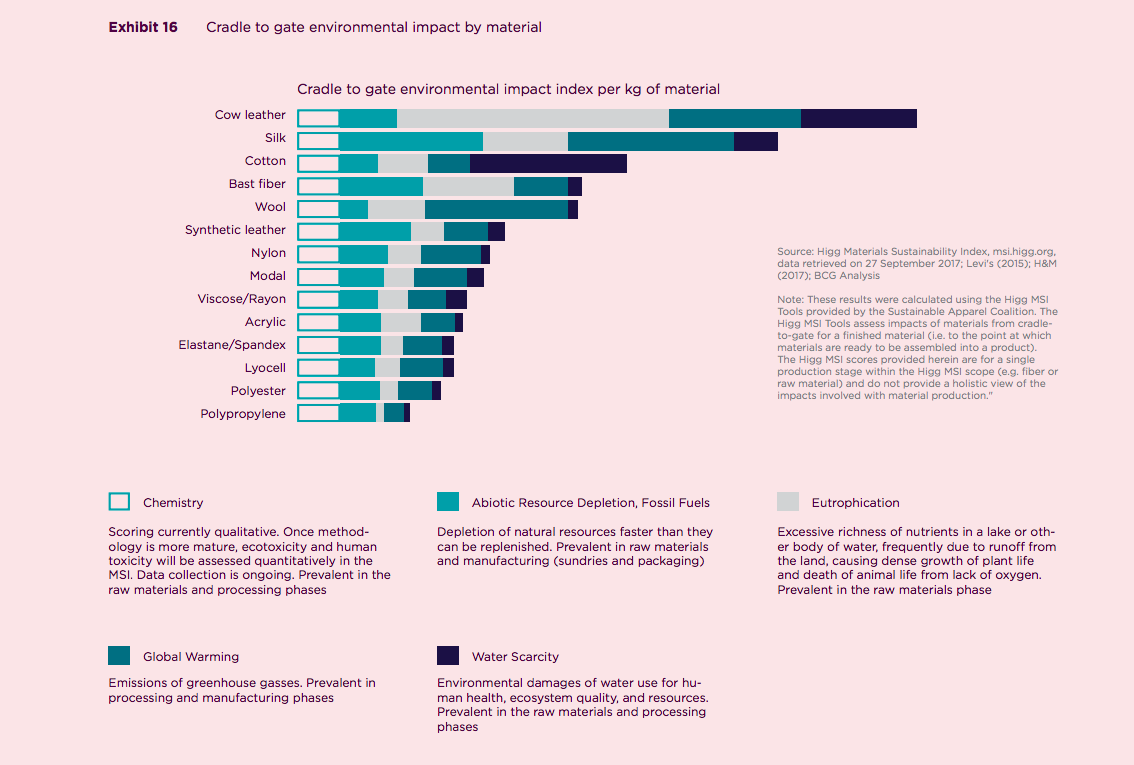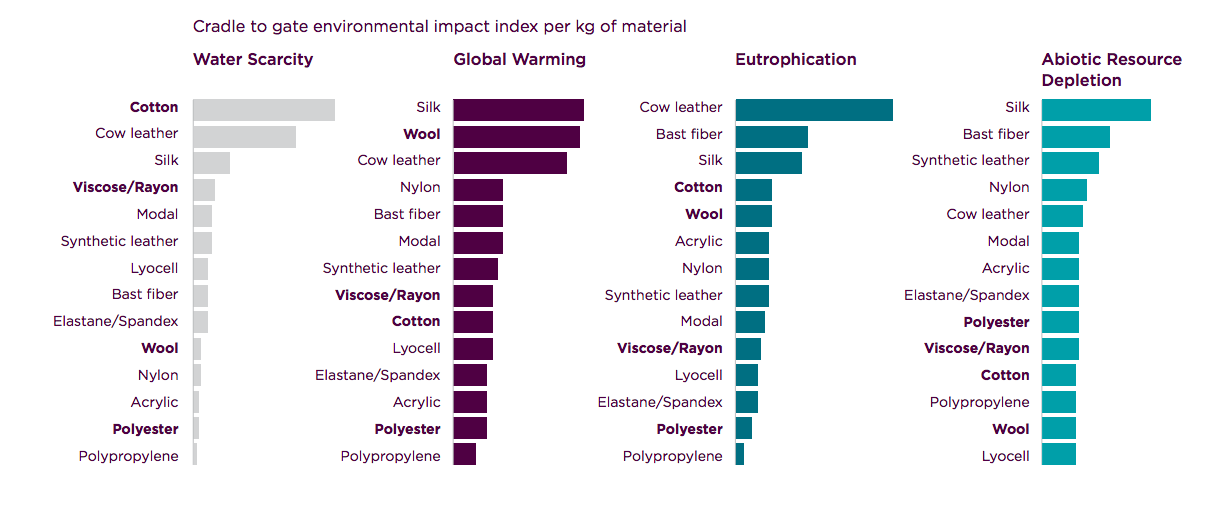The repercussion of leather on the environment is quite significant. According to the Sustainable Apparel Coalition's "The Higg Index" the impact of most leathers is set at 159 points while other materials such as polyester or cotton have a score of 44 and 98 respectively. This score for leather is mainly because of the effect of global warming, pollution and the large amount of water used.
LEATHERS HYDRIC FOOTPRINTAccording to the data provided by Fluence, 1,890,000 litres of water are needed to raise one cow, 103,950 litres (5.5%) out of 1,890,000 are considered to be for leather*. According to their calculations, about 6kg of leather are produced per head, in other words, each kilo of leather requires approximately 17,000 litres of water. This amount is confirmed by the Water Footprint Network.
*fluencecorp.com/water-use-in-the-leather-industry
On the other hand, in the manufacture of our synthetic leather fabric only 30 liters are used per kilo. That is, 566 times less. We also avoid the slaughter of millions of animals (a fundamental pillar of our brand philosophy).
According to the data provided by Fluence, 1,890,000 litres of water are needed to raise one cow, 103,950 litres (5.5%) out of 1,890,000 are considered to be for leather*. According to their calculations, about 6kg of leather are produced per head, in other words, each kilo of leather requires approximately 17,000 litres of water. This amount is confirmed by the Water Footprint Network.
*fluencecorp.com/water-use-in-the-leather-industry
On the other hand, in the manufacture of our synthetic leather fabric only 30 liters are used per kilo. That is, 566 times less. We also avoid the slaughter of millions of animals (a fundamental pillar of our brand philosophy).

CO2 EMISSIONS
According to the article "Carbon and energy footprint analysis of tannery wastewater treatment: A Global overview" the emissions caused due to the industrial process of leather and the treatment of the wastewater per year are considered to be around 1.0 1011 kg CO2 equivalent.
About
Multi-column


VEGAN FRIENDLY
We find pointless the use of archaic materials such as leather. Andromeda clothing uses only animal-free fabrics. We are the only 100% vegan motorcycle clothing brand.
ABOUT US



